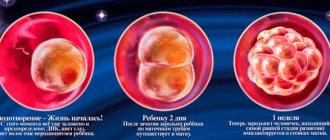What is Glycine
One of the nonessential simplest amino acids, which is also a central neurotransmitter. Glycine is a component of protein, produced in the body and supplied to it from the outside with food. In its pure form it is a fine-crystalline white powder. It ensures the conduction of nerve impulses, regulates brain activity, has a sedative effect, and prevents the development of muscle dystrophy.
In the pharmaceutical industry, the biotic drug is produced in the form of lozenges:
- Glycine: white tablets containing 100 mg of active ingredient, 50 pcs. in cell blisters;
- Glycine Bio: white tablets, flat-cylindrical, uncoated, 50 or 100 mg of active ingredient per tablet, packaged in 10–100 pieces in plastic bottles or cell blisters;
- Glycine Forte Evalar: yellow tablets with lemon flavor, contain 600 mg of glycine, vitamins B1, B6, B12.
Additional components of the drugs: soluble MCC, magnesium stearate, povidone.
Glycine enhances protective inhibition in the central nervous system, reducing mental and emotional stress. The drug improves brain performance, neutralizes the effects of toxins on it, and prevents the progression of nervous system disorders due to injuries and ischemia. Glycine eliminates signs of vegetative-vascular disorders, helps you fall asleep easily, and normalizes sleep quality.
Glycine has an affinity for the cells of the body, is quickly absorbed through the mucous membranes, and is distributed in all fluids and tissues. The drug does not form deposits, is non-toxic, breaks down into carbon dioxide and water.
Glycine during pregnancy
Most expectant mothers face problems such as emotional disorders or sleep disorders. Increased nervous excitability or thirst for work achievements is replaced by a complete reluctance to perform any actions. Insomnia is replaced by chronic lack of sleep, when a woman sleeps for days, but still feels overwhelmed. Many mothers, and especially their closest relatives, do not need to explain the meaning of the phrase “Go somewhere closer”; they have experienced it all themselves. And then they come to the rescue, Glycine lozenges. Of course, only as prescribed by a doctor.
What is glycine
Small white rounds, pleasantly sweet in taste, so that sucking them under the tongue does not become synonymous with torment. The cost of the drug Glycine in pharmacy chains is from 32 to 50 rubles per pack of 50 tablets. The principle of action of glycine is as follows:
- reduces blood pressure;
- eliminates depressive moods, normalizing the emotional background;
- reduces the level of aggression;
- regulates metabolic processes in the brain;
- improves sleep quality;
- accelerates the conduction of nerve impulses;
- neutralizes the harmful effects of other drugs or toxins;
- restores an adequate reaction to what is happening around a person.
The active component of the drug is glycine - a replaceable aminoacetic (aminoethanoic) acid, useful, like all amino acids. Once in the body, glycine easily overcomes the blood-brain barrier (penetrates the brain), restores order and breaks down into its simplest components. Excipients in each tablet are:
- magnesium stearate - 1 mg;
- water-soluble methylcellulose - 1 mg.
Amino acids act on the human body like vitamins. They are building materials for protein, and their lack due to stressful situations and other negative factors leads to the development of diseases of the nervous and other body systems.
Table: differences between types of Glycine
| Drug name | Mass of amino acids in 1 tablet | Peculiarities |
| Glycine | 100 mg | The classic composition is produced by the pharmaceutical company Biotiki. |
| Glycine Bio | 100 mg | The same classic composition, but produces the drug with the Bio prefix, which is a common marketing ploy. Glycine is a completely biological substance. |
| Glycine Forte Evalar | 300–500 mg | The additional content of B vitamins in this dietary supplement (BAA) enhances the effect of the drug on the nervous system. Not a medicine. Therefore, making an independent decision about admission is highly undesirable. |
| Glycine VIS | 200 mg | Its composition is similar to Glycine Evalar Forte and is also contraindicated for expectant mothers, being a dietary supplement. The effectiveness is not comparable with the possible effect on the fetus. |
| Glycine Canon | 1000 mg | This dose of an essential amino acid significantly exceeds the required amount for preventive purposes and conventional therapy, which is justified only for ischemic stroke. |
Is it possible to use glycine in early and late pregnancy?
To begin with, it should be clarified that only the attending physician has the right to prescribe a course of glycine therapy for pregnant women. Also, expectant mothers are not recommended to take medications containing any active additives to the classic composition throughout the entire gestation period.
In addition to a high dose of amino acid, Glycine Forte Evalar contains B vitamins, and an incorrect dosage of two of them can lead to hypervitaminosis, characterized by severe clinical manifestations, even coma is possible
And now by trimester:
- From 1 to 14 weeks, it is undesirable to take any medications, since at this time the formation of the baby’s systems and organs occurs. But if the doctor considers it necessary to support the mother’s body with glycine, you must strictly follow all prescriptions and not deviate from the recommended dose. The ability of glycine to neutralize toxins is very useful for women who, not knowing about their situation, drank alcohol or medications contraindicated for pregnant women;
- 15–27 weeks are characterized by weight gain in expectant mothers. Because of this, surges in blood pressure are possible, which are smoothed out by glycine. Efficiency tends to zero, irritability increases, and there is still a lot of time before maternity leave. Aminoethanoic acid will help you complete the required weeks without spoiling relationships with loved ones and colleagues;
- from the 28th week until birth, it becomes increasingly difficult for pregnant women to move; internal organs are compressed by the growing fetus. To prevent hypoxia in the baby, and to help the mother get rid of swelling and fear of the upcoming birth, glycine and its calming properties will be useful.
All animal experiments did not reveal a negative effect of glycine on the fetus. Similar studies have not been conducted on humans, but doctors try to prescribe any medications to pregnant women only taking into account the undeniable benefits.
Video: glycine and its types
When and how to take Glycine
The drug is indicated for:
- stress;
- psycho-emotional breakdowns, neuroses;
- high mental stress;
- diseases that provoke nervousness, insomnia;
- alcohol withdrawal syndrome;
- behavioral deviations in children and adolescents;
- ischemic transient attacks, stroke.
The drug is taken on an empty stomach, before or after meals. The presence of food in the stomach does not affect the absorption of glycine. The tablets are placed under the tongue or buccally - between the gum and lip. Contact of the drug with the mucous membrane is necessary. There is no need to chew or swallow it; you just need to wait until it is completely dissolved in your mouth. Glycine does not require drinking water.
The daily dose for adults is from 100 to 1000 mg, depending on health problems. General recommendation for use for adults: 1 tablet. 2–3 times a day.
Contraindications and side effects of glycine
The instructions for the drug say that a contraindication is the patient’s intolerance to the components of the drug. But glycine should not be used by those with a tendency to low blood pressure; the consequences are difficult to predict.
Side effects include allergic reactions, manifested by itching and redness of the skin.
Interaction of glycine with other drugs
Reduces severe side effects:
- neuroleptics;
- anxiolytics;
- antidepressants;
- anticonvulsants and hypnotics.
Video: the real effect of glycine
Overdose
Glycine is not capable of causing an overdose, including during pregnancy during the 1st, 2nd or 3rd trimester. Aminoacetic acid contained in the human body is necessary for the occurrence of full metabolic processes and trophism of central nervous system tissues.
When recommended doses are exceeded, as a rule, there is no significant increase in the concentration of the substance or an increase in its effect. Glycine is a low-toxic drug that quickly breaks down in the liver into water and carbon dioxide. After a few hours, aminoacetic acid leaves the body in the urine.
However, clinical studies have shown that taking excessive amounts of the drug can cause short-term digestive upset. These symptoms disappear without additional drug intervention.
Instructions for use, dosage
The instructions for use of Glycine contain separate recommendations for daily dosage. The optimal amount of the drug, as a rule, does not exceed 4 tablets. The medicine should be placed under the tongue and dissolved slowly.
The duration of treatment with Glycine should not exceed 30 consecutive days. If necessary, therapy can be repeated after a month's break. For pregnant women with signs of increased excitability and nervousness, it is enough to take 1 tablet of Glycine 2 times a day for 2 weeks to stabilize their psycho-emotional state.
I trimester
As already noted, in the first weeks of pregnancy it is recommended to avoid the use of any medications, even if they are considered the safest for the health of the fetus. In practice, Glycine is prescribed only if there are serious indications in pregnant women requiring mandatory medical therapy (for example, for insomnia accompanied by severe headaches).
At the same time, doctors do not recommend taking the drug regularly in the early stages; instead of systematic use, it is better to take tablets as needed, that is, precisely in those cases when sleep problems appear. Optimal regimen for pregnant women: 1 tablet half an hour before bedtime.
II trimester
There are no contraindications for taking Glycine after the 14th week of pregnancy, with the exception of the patient’s allergies. A common reason for using Glycine at this time is headache, which occurs as a result of impaired blood flow and spasm of blood vessels in the neck and brain.
To eliminate the symptom, it is recommended to take 1 tablet 3 times a day. Glycine will improve the elasticity of the arteries, due to which the vessels will dilate and blood will flow more intensely to the brain.
A noticeable effect, according to women, occurs on the 3-4th day of treatment. To completely eliminate neurological manifestations, you need to take the tablets in a course (10-14 days). If the cause of a headache in a pregnant woman is epilepsy, migraine, coronary artery abnormality or tumor, Glycine will not relieve the problem.
III trimester
Glycine during pregnancy (3rd trimester) is often prescribed as an adjuvant therapy against the background of uterine hypertonicity and the threat of premature birth. The drug has a positive effect on muscle tissue, helps relieve tension in the lower back, and improves blood circulation in the pelvic organs.
It is better not to take Glycine during pregnancy in the 1st trimester
In the last weeks of pregnancy, doctors recommend taking 1 tablet on an empty stomach and before bed.
Side effects of Glycine
When pregnant women use the amino acid Glycine, as a rule, there are no negative effects. It is not recommended to take the medicine if you are allergic to its components. The positive side effect of the drug is that it greatly weakens the intensity of the negative effects of other medications that have a direct effect on the central nervous system (hypnotics and sedatives). Glycine during pregnancy rarely calls for:
- allergic reaction;
- increased drowsiness, accompanied by noise in the head;
- slight dilation of blood vessels;
- slight loss of coordination;
- thirsty;
- decreased blood pressure;
- dizziness, darkening of the eyes;
- decreased concentration.
Release form and composition of the drug
This product is sold in tablet form.
1 dose of the medicine contains:
- 100 mg microencapsulated glycine;
- 1 mg water-soluble methylcellulose;
- 1 mg magnesium stearate.
In the pharmaceutical industry, glycine tablets are often combined with vitamins B and D3, but the main component of the tablets is Glycine, a synthetic analogue of an aliphatic amino acid produced in the human body. With a deficiency of this substance, symptoms arise that require medicinal correction.
Glycine tablets have a flat-cylindrical shape and are white in color with a marble tint. Each tablet is marked with a typical score in the middle. 1 package may contain different amounts of the drug (depending on the manufacturing company). Glycine is intended for sublingual use. The tablet is placed under the tongue and dissolved until completely dissolved.
How to reduce the risk of miscarriage with recurrent miscarriage
If a woman has already had a miscarriage, the likelihood of another unsuccessful pregnancy doubles. Therefore, in such cases, it is very important to regularly visit the gynecologist and take all prescribed treatment.
Main causes of miscarriage
The most common cause of miscarriage in the first weeks of pregnancy is genomic and chromosomal abnormalities.
As a rule, these are DNA damage incompatible with the life of the fetus. Women who have had several involuntary abortions in a row often have changes in their immune system. The woman’s body perceives the embryo as a foreign organism and activates defense mechanisms. As a result of such a struggle of immunity, the embryo dies. During a normal pregnancy, the mother’s immunity is somewhat suppressed from the first days, which allows the embryo to implant and develop safely.
Anatomical features of the uterus, hormonal disorders, and genital tract infections can also cause termination of pregnancy at any stage.
Another factor that can cause miscarriage is psychological stress. Under stress, the production of tumor necrosis factor sharply increases, which is involved in a nonspecific immune response and can damage the membranes of the embryo/fetus; also, during stress, placental vasospasm occurs. Therefore, a woman’s emotional state throughout pregnancy is a determining factor for a successful pregnancy.
What to do if there is a risk of losing the pregnancy?
With a high risk of miscarriage (after two or more miscarriages), an important control tool is to analyze the concentration of hCG (human chorionic gonadotropin) in the first trimester and α-fetoprotein in the second trimester.
At the same time, regular ultrasound monitoring is also carried out, in some cases every week. The threat of miscarriage is a reason for hospitalization, but, depending on the circumstances, the choice is often made in favor of home treatment. In any case, you should strictly follow the prescriptions and recommendations of the doctor who is caring for your pregnancy.
If there is increased anxiety or an unfavorable psychological situation in the family or at work, sedatives are prescribed. Glycine is widely used , it is highly effective and, most importantly, safe during pregnancy. The amino acid glycine strengthens the nervous system and improves the emotional state, which eliminates one of the risk factors for miscarriage - psychological stress.
Recurrent miscarriage is also an indication for prescribing progestins from the first day of visiting the antenatal clinic. Progesterone substitutes help maintain sufficient levels of the pregnancy hormone, which promotes normal implantation of the fertilized egg.
Often, if there is a threat of miscarriage, bed rest is prescribed. During the period of implantation of the fertilized egg, nagging pain in the lower abdomen and lower back can be a harbinger of miscarriage. Compliance with bed rest in this case can be a decisive factor in the successful outcome of pregnancy.
To improve fetal nutrition and maturation, metabolic drugs are prescribed. Limontar® improves the growth and development of the embryo from the first days; it is recommended for pregnancy at any stage. The drug activates the processes of energy formation in fetal cells, which increases its viability and exhibits antihypoxic and antioxidant properties. In case of early toxicosis, Limontar® improves the general condition of the mother, which has a positive effect on the condition of the fetus. The drug is completely metabolized in the body and ultimately turns into carbon dioxide and water.









